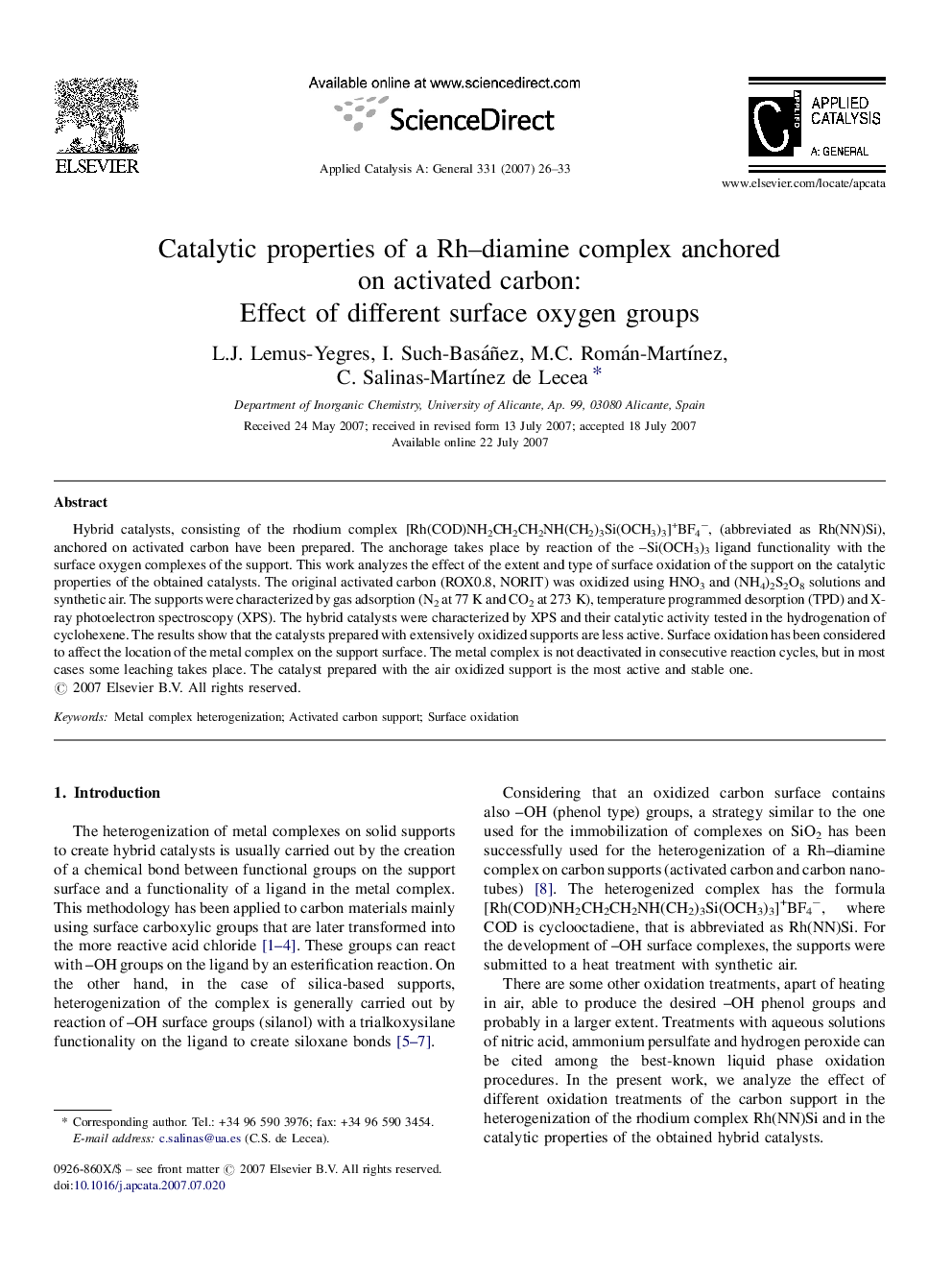| Article ID | Journal | Published Year | Pages | File Type |
|---|---|---|---|---|
| 43338 | Applied Catalysis A: General | 2007 | 8 Pages |
Hybrid catalysts, consisting of the rhodium complex [Rh(COD)NH2CH2CH2NH(CH2)3Si(OCH3)3]+BF4−, (abbreviated as Rh(NN)Si), anchored on activated carbon have been prepared. The anchorage takes place by reaction of the Si(OCH3)3 ligand functionality with the surface oxygen complexes of the support. This work analyzes the effect of the extent and type of surface oxidation of the support on the catalytic properties of the obtained catalysts. The original activated carbon (ROX0.8, NORIT) was oxidized using HNO3 and (NH4)2S2O8 solutions and synthetic air. The supports were characterized by gas adsorption (N2 at 77 K and CO2 at 273 K), temperature programmed desorption (TPD) and X-ray photoelectron spectroscopy (XPS). The hybrid catalysts were characterized by XPS and their catalytic activity tested in the hydrogenation of cyclohexene. The results show that the catalysts prepared with extensively oxidized supports are less active. Surface oxidation has been considered to affect the location of the metal complex on the support surface. The metal complex is not deactivated in consecutive reaction cycles, but in most cases some leaching takes place. The catalyst prepared with the air oxidized support is the most active and stable one.
Graphical abstractHybrid catalysts, consisting of the rhodium complex [Rh(COD)NH2CH2CH2NH(CH2)3Si(OCH3)3]+BF4−, anchored on activated carbon have been prepared. The anchorage takes place by reaction of the Si(OCH3)3 ligand functionality with the surface oxygen complexes of the support. This work analyzes the effect of the extent and type of surface oxidation of the support on the catalytic properties of the obtained catalysts.Figure optionsDownload full-size imageDownload as PowerPoint slide
